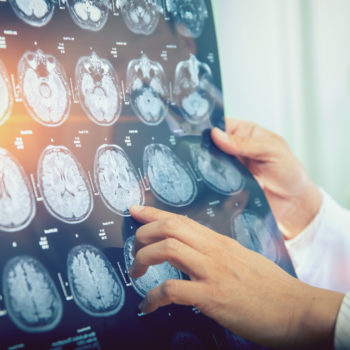It has somehow to do with autism but in a different form, so much so that there is still discussion about whether to consider them two distinct entities or the same condition that differs from gravity. The Asperger’s Syndrome affects six people out of 10 thousand and consists of two fundamental traits: a persistent difficulty in communication and social interaction in different contexts and behaviors, interests or restricted and repetitive activities. Those who suffer from it find it difficult to establish relationships, to share their emotions and affections with other individuals and to adapt to the customs of interpersonal interaction. We talked about how to recognize this disorder with Dr. Paolo Amami, neurologist and psychologist at Humanitas.
Eye-catching magnifying glass on the disorder
The term was coined by the English psychiatrist Lorna Wing in 1981 in honor of Hans Asperger, an Austrian psychiatrist and pediatrician, whose work was not recognized until the nineties. Asperger’s Syndrome is a developmental disorder but does not lead to delays in intellectual and conjunctive development, as it affects the area of communication and social interaction and behavior. For this reason, it has often been assimilated or made to coincide with the notion of “high-functioning” autism, i.e. without intellectual delay. In some cases these individuals show uncommon talents, in fact they have the ability to devote themselves totally and to apply themselves systematically to their tasks. According to some scholars, it is possible to attribute more or less marked forms of Asperger’s syndrome to the personalities such as Mozart, Alan Turing, Charles Darwin, Vincent van Gogh and Albert Einstein. And again, Friederich Nietzsche and Ettore Maiorana. Syd Barret, the “crazy diamond” of Pink Floyd, who isolated himself from the group and lived as a hermit at the mercy of his ailments for over 40 years, has also been classified as an “Asperger” profile. What these subjects have in common is the difficulty in understanding, expressing and regulating their emotions, especially in social contexts, and therefore have a limited social capacity. The subjects who suffer from this syndrome have difficulty making friends and the tendency to feel uncomfortable with others. They happen to live with a specific theme that dominates their thoughts.
Which symptoms characterize a child Asperger?
Children affected by this syndrome often suffer from a delay in maturity and social thinking, find it difficult to establish ties of friendship and happen to be bullied. On the other hand, they are used to having remarkable linguistic skills, a broad vocabulary and an elaborate syntax, which absurdly coexist with a propensity to hold immature conversations, an unusual taste for prosody and a tendency to be pedantic and repetitive. When they get passionate about something it usually becomes the center of their world and they are able to practice it with great obsessiveness and intensity. They may be awkward in the way they walk and uncoordinated and have difficulty organizing themselves.
“Among the main symptoms of a child with hypothetical Asperger’s syndrome there is a compromise in the use of non-verbal communicative behaviors such as direct gaze, mimicry or body posture and gestures,” said the doctor.
Here are the symptoms of Asperger’s syndrome listed by the specialist:
– difficulty in establishing relationships with the peers appropriate to the level of development
– there is no spontaneous search for the sharing of interests and emotions (for example, not to show, bring or draw the attention of other people to objects of interest)
– the modes of behavior, interests and/or activities are restricted, repetitive or stereotyped (for example, there is a total dedication to one or more types of interests or activities)
– the completely rigid submission to useless habits or specific rituals, the presence of useless or ritualistic habits, as well as stereotypical and repetitive motor behavior (for example, slamming or twisting hands or fingers or complex movements of the whole body)
“It must be borne in mind that these characteristics must be present from a very early age,” concluded the specialist.
A word to the specialist
“The DSM V, the latest version of the diagnostic manual of mental disorders, no longer provides for the diagnosis of Asperger but has a single category: that of ‘autism spectrum disorders’, which includes the old categories of ‘autism disorder’, ‘Asperger’s syndrome’, and pervasive developmental disorder – said Dr. Amami -. At the moment, within the autism spectrum disorders, 3 levels of severity are recognized according to the degree of impairment in the functioning: “requires support”, “requires substantial support” and “requires very substantial support”.








